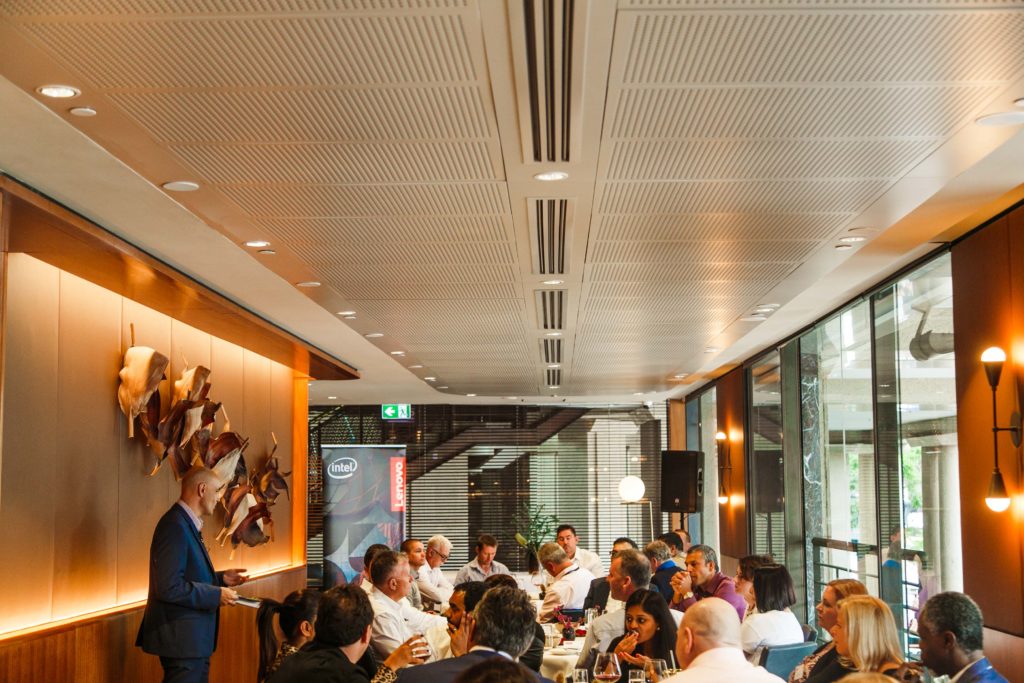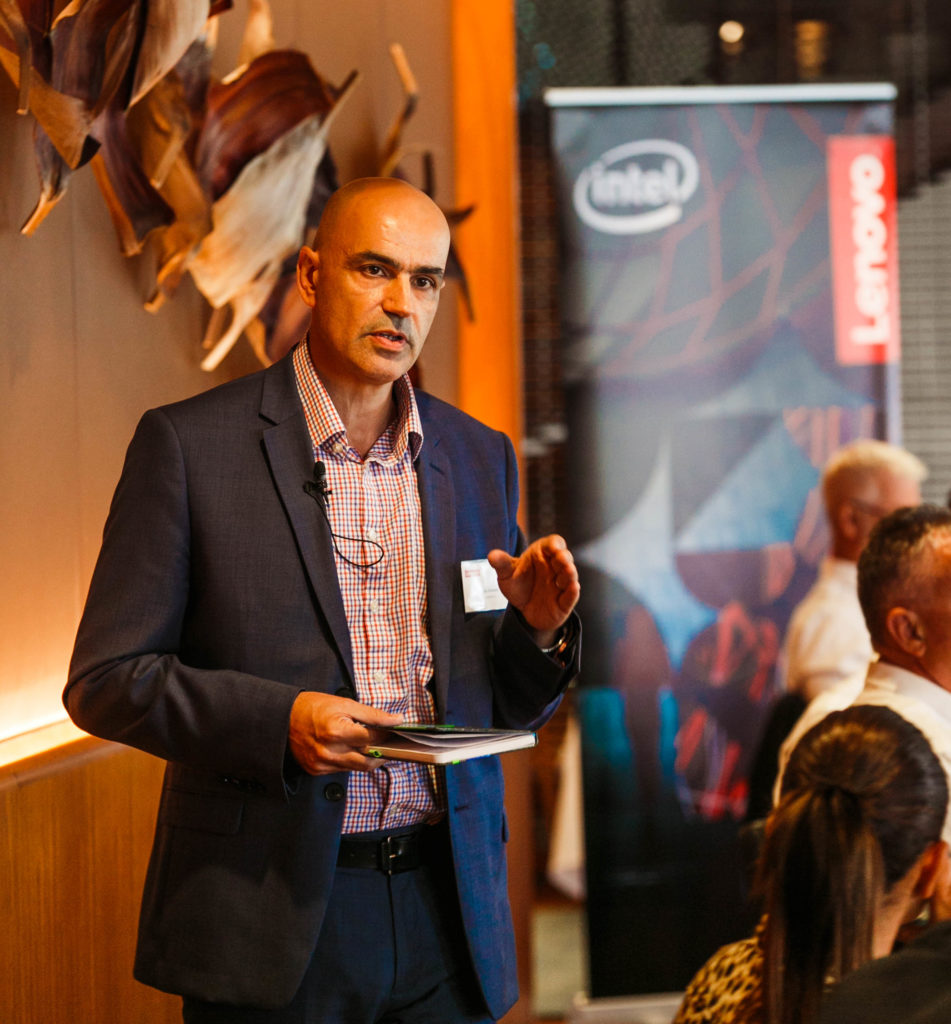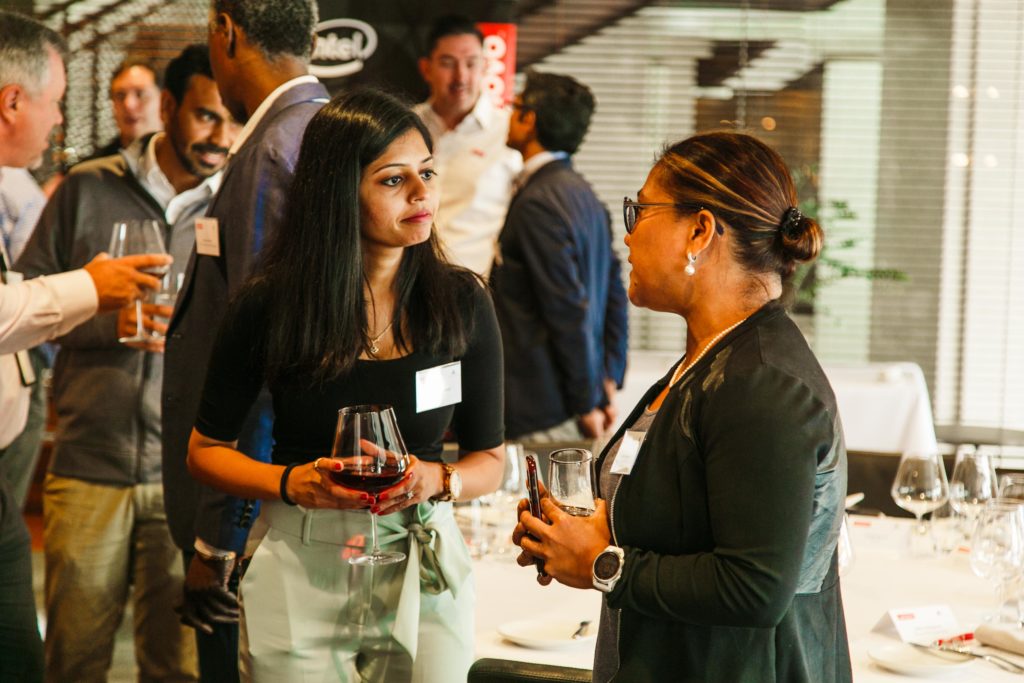Cloud Transformation In Higher Education
Class Is In Session Universities offer a plethora of education-based services and information, as well as a diverse body of…
Class Is In Session
Universities offer a plethora of education-based services and information, as well as a diverse body of students seeking enlightenment and specialised learning. But to maintain the ease of access and reliability of these services, for students and teachers alike, a university, college or specialist school’s IT infrastructure must be as technologically adaptive and progressive as those in dedicated tech enterprises.
This transformation will always require the acquisition and implementation of technological innovation, but it will not be solely limited to this. It will also require collaborative cultural change implemented in a strategic manner. Suggested answers to all of these amalgamated challenges were given over the course of Lenovo and Innovatus Media’s executive roundtable luncheon, held at Sydney’s exclusive ARIA.
Featuring Lenovo’s NSW Public Sector Account Executive, Guy Simons; his colleague, HCI and SDS Lead for Australia and New Zealand, Daniel Morris; and moderated by Innovatus Media’s own Hannah Quill, the event granted invited guests a chance to map and methodically approach how they could best build a quick and efficient cloud transformation experience for their institution.
The First Lesson To Be Learned…

History repeats itself, ergo: understanding the past so that you can internalise present needs is a must – and it’s no different for advancing one’s IT agendas. After an introduction from Hannah and Daniel Morris, Guy began an archaeological exploration of IT’s evolution; from the early days of sheer hardware acceleration, to the not-so-distant past that lead us to the current state of cloud networking.
“In the 2000s, the IT sector moved into the technological realm of virtualisation – trying to create a digital version of computer hardware, storage, and networks. Convergence, too, became the norm. But this was then something people wanted to improve upon. Today, the hot topic that stems from these transformational processes is one of hyper-convergence.”
As industry standards morphed, and enterprise championed the newfound structuring and running of these operating models, a new stage in IT evolution erupted and disrupted the market.
“Around the years 2013 to 2014,” Guy explains. “You begin to see how AWS – Amazon Web Services, providing cloud computing platforms – started to drive major change. The change was both internal, within an organisation’s business and IT, but it was also a change seen in the market of products and services that could be utilised or provided.”
The picture Guy painted was one of agility and flexibility. Machines had to become faster in order to keep up with the demands of processes. Then, as the applications and programs became faster, and machines could work together to power these, organisations and consumers began seeing a need to gain something that was multi-purpose but could target specific needs at any given time.
It led us to the nature of modern IT as we know it.
Lost Arts…
“After all the changes and advances, people wondered: Well… What comes next? What comes after the cloud? The answer was not so much an innovation but an experience – IT departments began to feel a loss of relevance.”
Guy continues to report on how the nature of IT as it now was – open, ready to push the product forward almost on its own or even with the help of those consuming it – meant that those in an organisation’s IT department found themselves lost. They grew siloed and focused only on occasional maintenance of legacy and current systems, rather than accelerating the business. But twiddling their thumbs would not aid them in finding a new place in the hierarchy of innovation. There was still so much to learn and experience and share.
The answer to reinvigorating IT was on the bleeding edge of the industry.
The Next Stage…
Shadow IT was where innovation of both method and result lay. These collections of talented individuals and departments, secretively developing the next big thing that would expand the profit margins – let alone the existing science and culture spurning the market – ran the tight rope of what was possible in order to regain control of the IT industry’s direction.
“If you examine why Shadow IT began to proliferate, it was because of what cloud networks offered,” Guy explains. “Their standards, their scalability and elasticity… IT had to start working on the edge in order to catch up to other departments and what they themselves had created.
In fact, these innovative operational elements of organisations drove 20 per cent of IT team activity. That’s a handful of peoples, pushing nearly a quarter of the technological direction an enterprise made.”
Testing The Knowledge
Having mapped out the past, Guy went on to explain how the current trends and future forecasts of IT
can be utilised by those in higher education. Speaking on what one should prioritise – business or technology – he reveals an underpinning element that many have overlooked.
“Agility, innovation, Shadow IT and DevOps has brought so much important innovation to the industry,” says Guy. “But all of this was driven by cultural shifts.”

The culture, he continues, encapsulates many strata. Societal, professional and interdepartmental, and even in the traditions surrounding how needs are approached or met. Faster machines meant a culture that prioritised agility. Smarter programs meant the culture became one of agility and flexibility.
But with the introduction of automation, self-reliant systems, phasing out of legacy machines and processes, and of course ShadowIT, the culture is now about overall efficiency – and efficiency is very different to speed or elasticity or independence.
To Guy, the definition of efficiency covers some important questions that CIOs and IT specialists in higher education must ask themselves.
“There’s so much data locked in legacy apps. The skills and employees involved in these apps are also part of an organisation’s legacy and include valuable lessons and information too. So, you have to ask yourself how you can unlock it and add it to your current workflows.”
Guy is also adamant about the need to ask and answer questions on compliance and regulation.
“Things like the privacy act, and other data security laws, means public cloud utilisation has suffered slightly. Organisations like Google weren’t immune to the challenges this presented, and the tragedies like that in Christchurch are hugely important examples of how many companies involved in the web and networks can be deeply affected by changes in policy.”
Guy offers an insider’s perspective of what leaders in other industries are doing, and thus what higher education employees should try.
“All of these issues got people prioritising where and when to use public, or hybrid, cloud. The equilibrium they found, and thus what made them champions, would always be determined by their business and the relevant governance structures.
The key point to take away is that the IT business has understood and gotten used to the experiences that public clouds give. They’ve learned that you have to make sacrifices – costs, control, loss of IP, security, performance. They saw that it’s an experience – you should control where you can.
“Shifting this experience doesn’t just mean bringing in new technologies. It’s more cultural, and about choosing behaviours that will ultimately cultivate a mood of progressive but effective change.”
Conclusion

Higher Education facilities in search of a cloud transformation that caters to every viable need, without unnecessarily skimping on features, were open to many more solutions and strategies at the executive luncheon. They were able to network and personally enquire as to the industry with the presenters and each other, sharing valuable lessons and tips, not to mention future chances to collaborate or support one another.
The team from Lenovo were greatly pleased with the deep interest folk have for achieving what is a difficult but hugely rewarding IT process, especially as that transformation will aid teachers and students in exploring so many important fonts of wisdom and tradition.
The wisdom taken from this event in particular was one of: focusing on what can be changed, beginning transformation, trimming and experimenting before going to market, and making sure the final product or service is one that drives metamorphosis in not just the IT culture of one’s industry, but one’s overall culture.





Comments